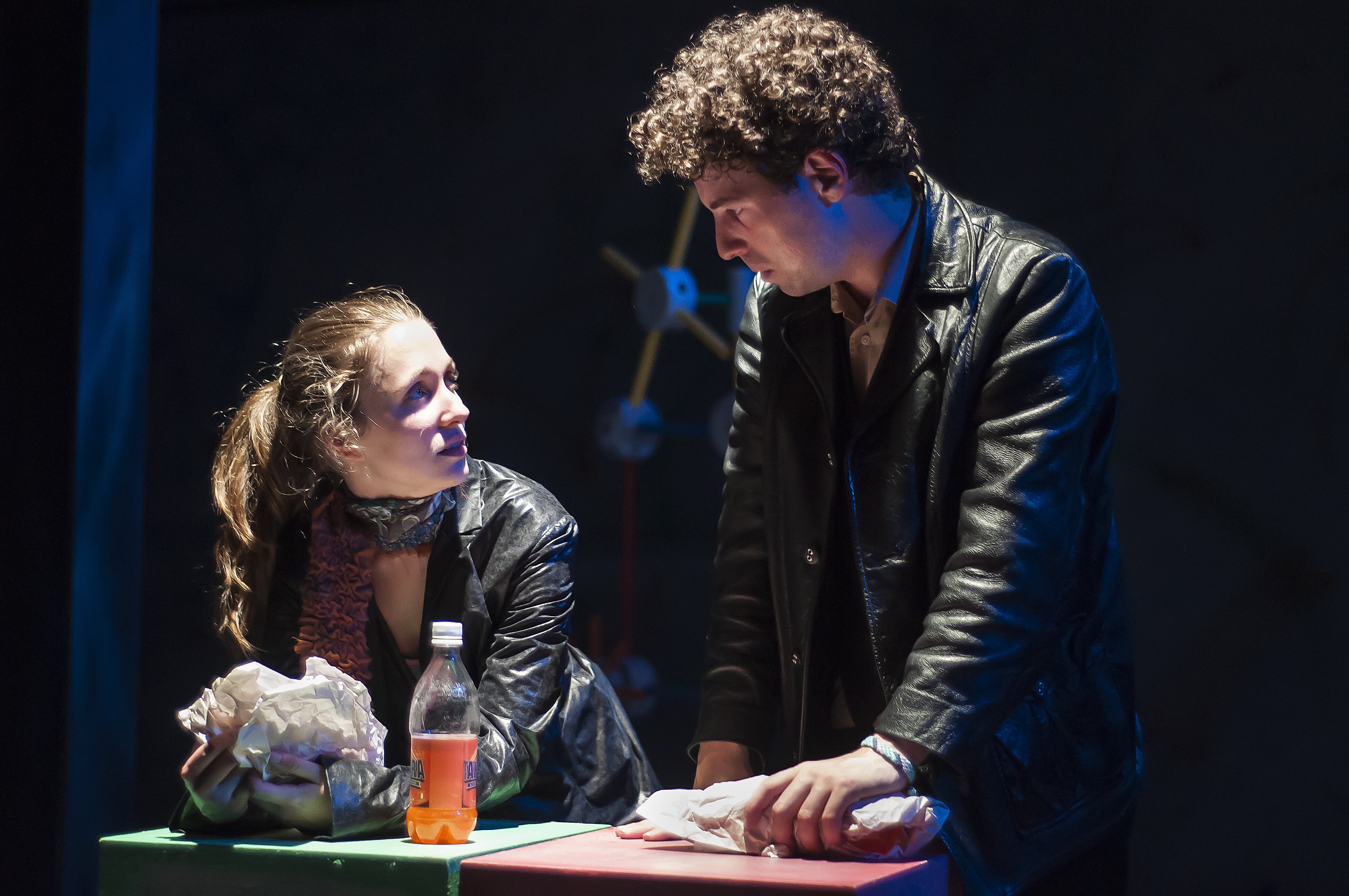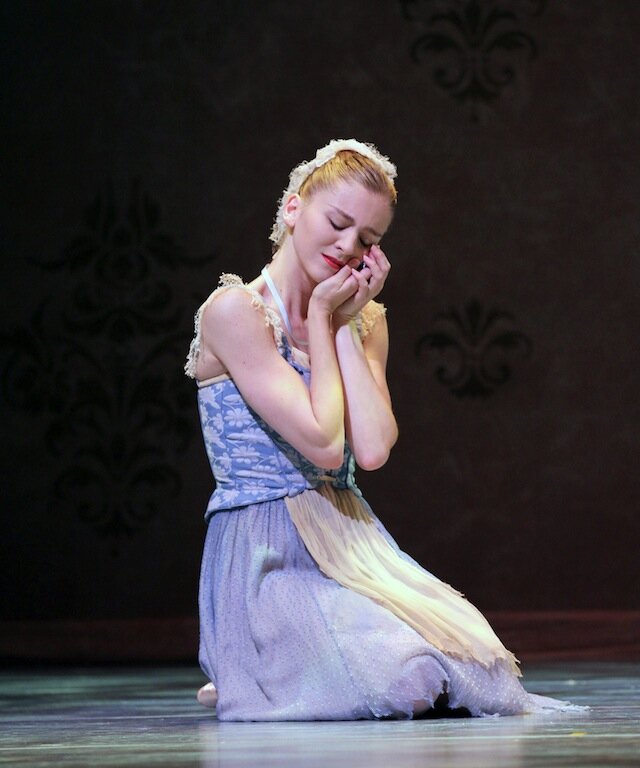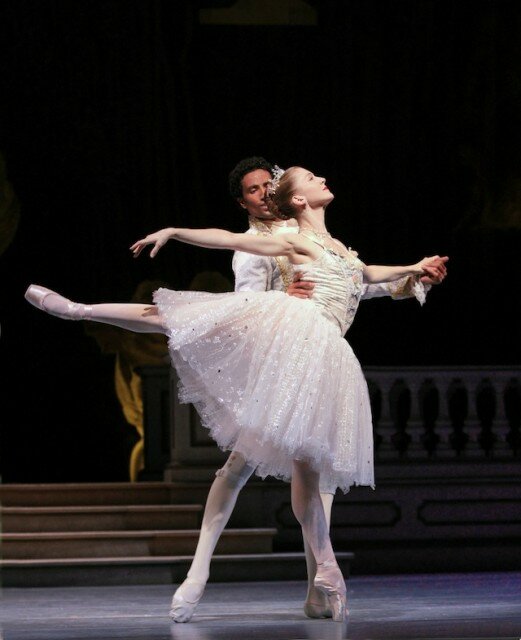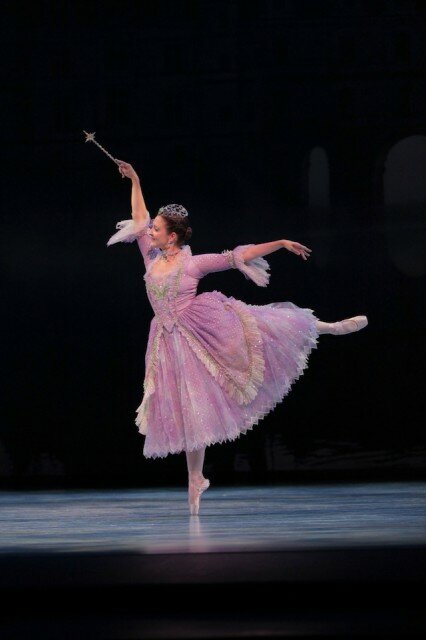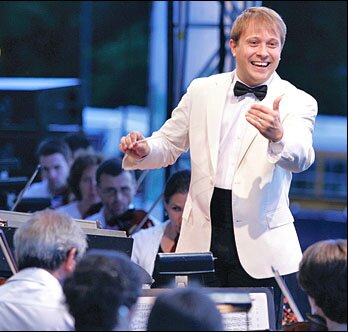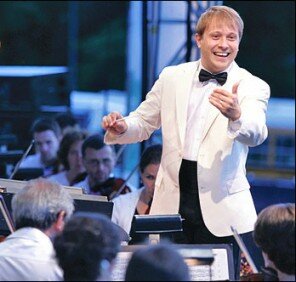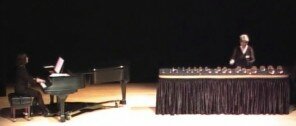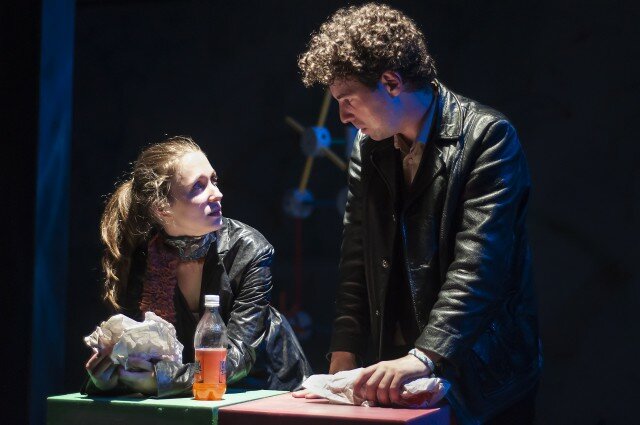
Great storytelling depends on the unseen. Dramas from Aeschylus to Albee are drawn out attempts to avoid revelation, and mystery is at the heart of every story—if only the mystery of what happens next. In Sound Theatre Company’s intensely gripping production of Disco Pigs ($15 at Ballard Underground through October 6) the most riveting moments are those in which our attention is focused on an empty space where we imagine an unseen character.
Any play that can make an audience flinch at shadowboxing is doing something right; Disco Pigs nearly induces nausea. The actor-versus-empty-space fight that had audience members’ hands flying to mouths and hearts comes near the end of a spectacle of infantile violence and indulgence: drinking, dancing, fighting—and watching Baywatch.
It’s your typical Irish boy-meets-girl-next-door story, only boy and girl meet in adjacent hospital nursery bassinets and the drinking and fighting go far beyond the expectations of cultural stereotypes.
Enda Walsh’s play was first produced back in 1996 and he adapted it (with significant additional detail and extrapolation) into a film in 2001. American audiences are just discovering Walsh now with a series of critically acclaimed works including The Walworth Farce and the book for the Tony-winning musical adaptation of the hit Indie-film Once.
As in Once there is an element of an abortive love story in Disco Pigs, but this tale is far more extreme than the wan sketch of a lovelorn Dublin busker. These troubling characters’ humanity is revealed through their psychopathology. In this regard Disco Pigs is a coming-of-age story, beginning in earnest on the characters’ 17th birthday. These friends, who have named one another Pig and Runt (Fox Rain Matthews and Alyssa Kay, respectively, play all the roles) must either grow up into adulthood or be annihilated by the heightened madness of their particular adolescences.
The production has some challenges but the scenes involving more than Pig and Runt are staged brilliantly. A shopkeeper’s dialogue with Pig is provided by Kay who stands in shadow behind Matthews staring at the same space in which we, in turn, imagine the milquetoast clerk. This technique effectively uses the empty space as a kind of puppet through which the attentions of audience and performers are filtered, just as listeners to a tale see the story come to life in their minds’ eyes. This creative engagement reduces the audience’s psychological distance from the production setting us up for the gut-wrenching impact of the final fight scene and its fall-out.
The reduction of distance also takes on plot dimensions late in this fast-paced one act as one begins to wonder where Pig ends and Runt begins. The division between these characters is the action of the denouement. While the film adaptation ends violently the play is less physically destructive but the emotional impact is tremendous.
The biggest challenges to the staging are auditory. The cold, echoing space of Ballard Underground does not serve the story well—though the concrete floor is palpable in the fight scenes. American audiences need a few minutes to accustom ourselves to the inscrutable Irish dialect and this task is made all the harder as Matthews and Kay race around shouting their lines while pushing a noisy shopping cart. Kay doesn’t project over the noise of the space or Lindsey Morck’s smart sound design and Matthews slips out of accent occasionally. These are unfortunate distractions in otherwise nuanced and hard-hitting performances, but the physicality of the acting keeps us from losing the plot.
Director Gianni Truzzi handles the pacing with delicacy organically bridging vast leaps from the frenetic action to suspended stillnesses. All this plays out on Richard Schaefer’s bare bones set that serves the play visually, if not aurally.
While Disco Pigs’ running time is quick, the experience is full, and Sound Theatre Company has wisely avoided extending it into a complete double bill, yet the play is not the only act. Sound Theatre Company, in cooperation with Richard Hugo House, is filling out the evening with a curtain warmer of poetry written and performed by local teens, a new pair each night. This is an apt choice, given the material to follow, and opening night featured a very impressive performance by recent Youth-Writer-in-Residence alumnus, Ramsey Jester. Remember that name and let’s hope that he takes some inspiration from Disco Pigs. We could use more plays of this caliber.
